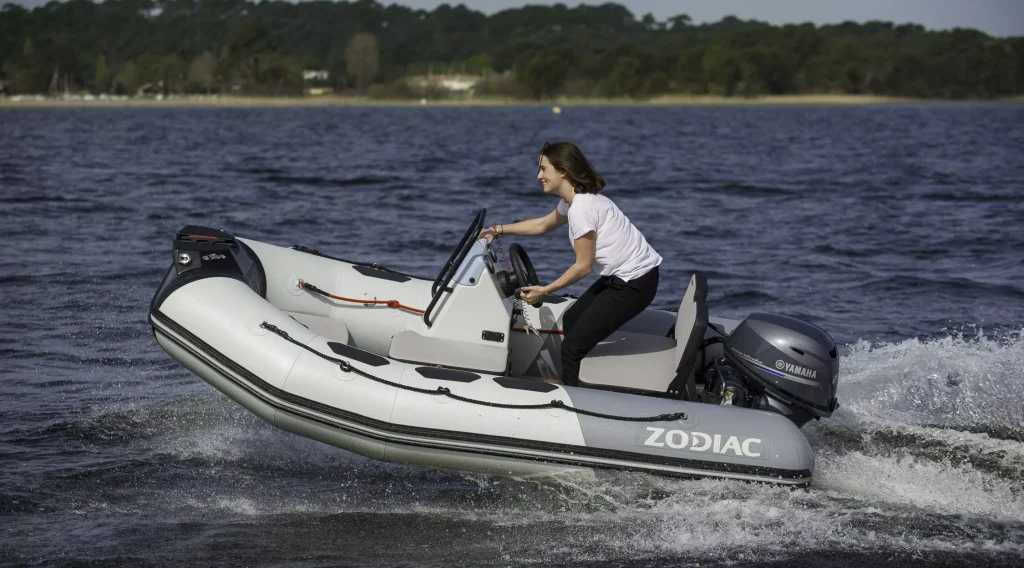Inflatable Boat Guide And Resources
-
325 STX Deluxe
-
12FT MARINE WOOD FLOOR
-
10FT MARINE WOOD FLOOR
-
11' Heavy Duty Boat XHD330
-
10' Heavy-Duty Boat FB300
-
14' Heavy-Duty KaBoat FKB430
-
18' Inflatable Boats SD518
-
16' Inflatable Boats SD488
-
15' Inflatable Boats SD470
-
14' Inflatable Boats SD430
-
13.8' Inflatable Boats SD415
-
13' Inflatable Boats SD385
-
12' Military Boats MB365
-
12' Inflatable Boats SD365
-
11' Heavy Duty Boat XHD330
-
11' Inflatable Boats SD330W
-
11' Inflatable Dinghy Boats SD330
-
12ft Inflatable Boat
-
10ft Inflatable Boat
-
12.5ft Inflatable Boat
Most Reviewed
Brands
Check Out Our Best Brands
What is an Inflatable Boat?
An inflatable boat is a dynamic, versatile vessel, ingeniously designed for a wide array of aquatic environments. At its core, it’s a marvel of modern engineering, combining portability, stability, and durability in a compact, flexible form.

The History of Inflatable Boats: A Journey Through Time
Inflatable boats, now a staple in recreational and professional water activities, have a rich and diverse history that dates back over a century. The evolution of these versatile vessels is a tale of innovation, wartime necessity, and a growing appreciation for the great outdoors. Let’s embark on a journey through time to explore the remarkable evolution of inflatable boats.
-
Early Beginnings: The Birth of Inflatable Concepts
The concept of inflatable vessels can be traced back to the early civilizations that used animal skins filled with air to cross rivers and streams. However, the first semblance of the modern inflatable boat emerged in the early 19th century. In 1839, the Duke of Wellington tested the first inflatable pontoons, designed by Lieutenant Peter Halkett. These were rudimentary in design, yet they represented a significant leap in boat technology.
-
The 20th Century: Military Innovation Drives Development
The two World Wars were pivotal in the evolution of inflatable boats. Their value in military operations, particularly in covert missions and amphibious landings, was quickly recognized.
Featured Latest
Pro 7
Zodiac Nautic’s Pro 7 stands out as a high-end semi-rigid motorboat, known for its customizable…
Open 3.1
Zodiac Nautic’s OPEN 3.1 is designed for enthusiasts who dream of owning a boat without…
MEDLINE 9
Zodiac Nautic’s Medline 9 is a testament to luxury and performance in the inflatable boat…
FAQ - General
Proper care involves routine cleaning with gentle soap and freshwater, regular air pressure checks, prompt repair of any punctures, and storing the boat in a cool, dry place away from direct sunlight. Proper maintenance ensures longevity and optimal performance.
Absolutely. Most punctures are repairable with a standard repair kit. The repair process usually involves cleaning the affected area, applying a patch, and allowing it to cure. It’s a straightforward procedure that can prolong the life of your boat.
Yes, with appropriate safety measures like life jackets and adult supervision, these boats are incredibly safe for children. Their inherent stability and buoyancy offer a secure environment for family fun on the water.
With proper maintenance, a high-quality inflatable boat can last between 10-15 years. Factors such as material quality, frequency of use, and storage conditions can influence its lifespan.
Inflatable boats are incredibly versatile. They are ideal for fishing, leisure paddling, exploring waterways, white-water rafting, and even for use as tenders for larger vessels. Their stability and ease of use make them suitable for a wide range of water-based activities.
Consider the primary use of the boat (fishing, leisure, adventure), the water conditions you’ll encounter, the number of passengers, and storage and transportation needs. Also, assess the material quality, construction, and reviews from other users to make an informed decision.
Yes, it’s crucial to store your inflatable boat in a dry, shaded area to protect it from UV rays and harsh weather conditions. Ensure it’s fully dry and clean before storage to prevent mold and mildew. Properly deflating and folding the boat can also prevent unnecessary stress on the material.



















